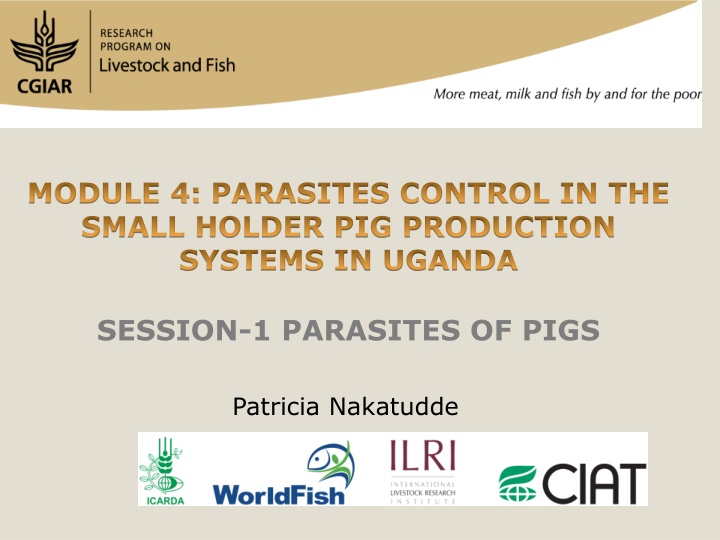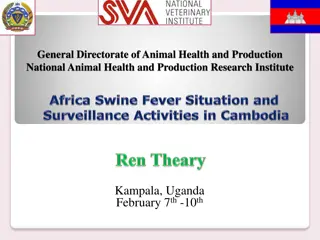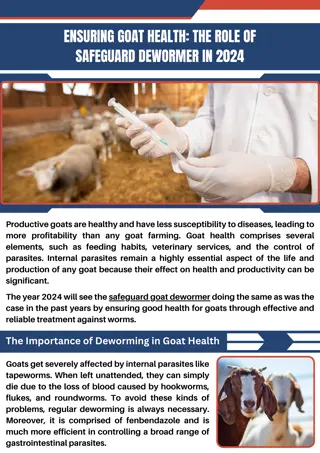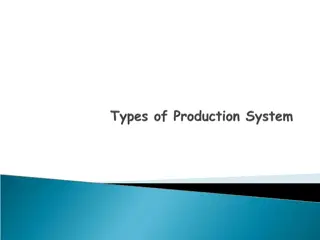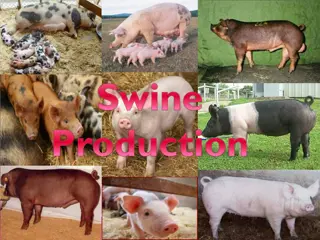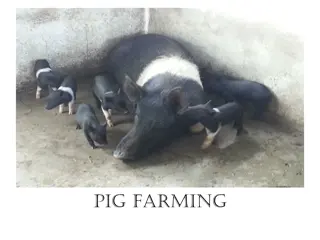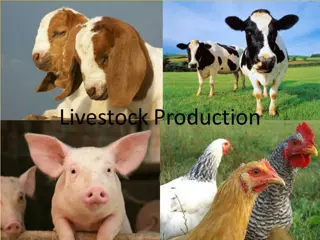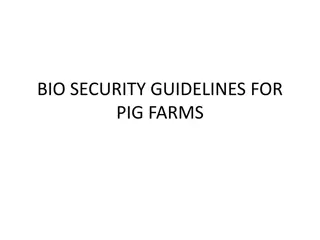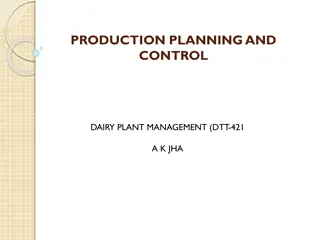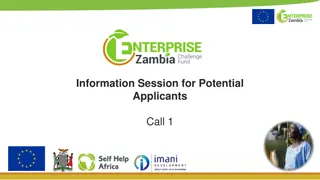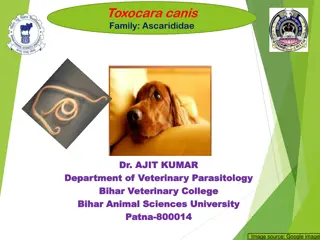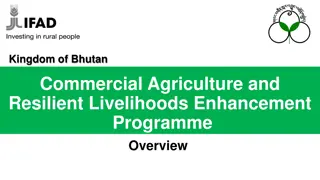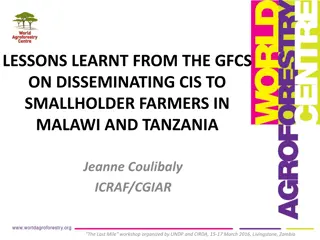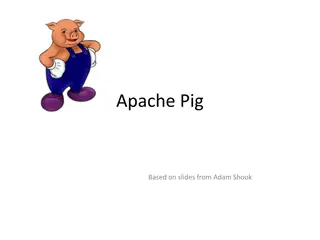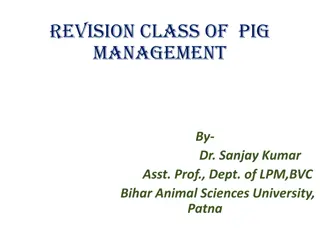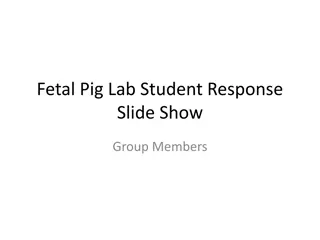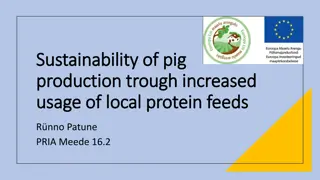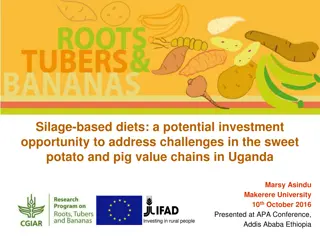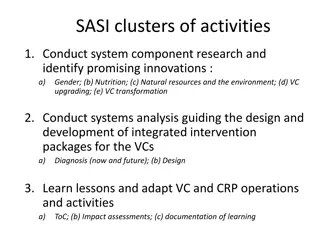Parasite Control in Smallholder Pig Production Systems
This module discusses parasites affecting pigs in Uganda, covering types of parasites, effects on pigs, transmission, life cycles, identification of infestations, characteristics of healthy pigs, and parasite management practices. The content also includes session objectives, exercises, and discussions related to understanding and controlling parasites in pig farming.
Download Presentation

Please find below an Image/Link to download the presentation.
The content on the website is provided AS IS for your information and personal use only. It may not be sold, licensed, or shared on other websites without obtaining consent from the author.If you encounter any issues during the download, it is possible that the publisher has removed the file from their server.
You are allowed to download the files provided on this website for personal or commercial use, subject to the condition that they are used lawfully. All files are the property of their respective owners.
The content on the website is provided AS IS for your information and personal use only. It may not be sold, licensed, or shared on other websites without obtaining consent from the author.
E N D
Presentation Transcript
MODULE 4: PARASITES CONTROL IN THE SMALL HOLDER PIG PRODUCTION SYSTEMS IN UGANDA SESSION-1 PARASITES OF PIGS Patricia Nakatudde
Session 1: Parasites of pigs o 1.1: Types of parasites affecting pigs o 1.2: Effects of parasites on pigs Session 2: Transmission of parasites Life cycle of Round worms Life cycle of tape worm Life cycle of Coccidia Life cycle of mites Life cycle of lice Life cycle for ticks Life cycle of jiggers(fleas) Life cycle of biting flies Trypanosomes
Identification of pigs infested by parasites Characteristics of a healthy pig Appearance of pigs affected by parasites o Session 3: Parasite management Bad practices carried out by the farmers Recommended good practices Control of worms Coccidiosis Lice Mites Ticks Biting flies
1.1. Introductions: Name game 1.2. Session objectives 1.3. Materials 1.4. Case story 1.5. Parasites of pigs 1.5.1. Internal parasites: worms (round and tape worms), Coccidia and Trypanosomes 1.5.2. External parasites: mites, lice, jiggers(fleas), ticks, tsetse flies 1.6. Location of parasites 1.7. Exercise 1: identification of parasites of pigs 1.8. Effect of parasites on the pig 1.9. Discussion and analysis
1. Opening i. The host calls the meeting to order ii. Opening prayer by one of the participants iii. Opening remarks by the official of the area iv. Facilitator introduces the team
2. Session objectives To bring farmers to be able to identify parasites of pigs For the farmers to understand their effect on the pigs
Introduction: Name game. Each participant writes on the card the name s/he would like to be called Each participant mentions the type of pigs kept, how they keep them 2 major expectations from the training Group the expectations and put on cards and pin them in the room
Materials and hand outs Ring binder for each participant containing a hard copy of the following: Outline of the training programme Training hand outs
1.3.Training Aids Training Aid 1.1: Name game Training Aid 1.2: Case story Training Aid 1.3: Objectives of the training Training Aid 2.1: Worm specimens Training Aid 2.2: Video clip of worms in faeces Training Aid 2.3: Video clip of lice Training Aid 2.4: Picture of parasite location Training Aid 2.5: slides of pig parasites Training Aid 2.6: Case study on good management/farming practices
Implementing what is taught makes pig farming more profitable Ask what they have learnt from the story o Case story
1. Parasites of pigs 1.1 Types of parasites affecting pigs 1.2 Effects of parasites on pigs
Explain the meaning of a parasite Are organisms that live either in the body (internal parasites ) or externally on or in the skin (external parasites Discuss the common parasites in Uganda (Study done in Masaka, Mukono and Kamuli districts by Krisina ) o Thread worms : small worms about 4mm long, Found in small intestines, and cause severe diarrhoea which may be bloody. Piglets of up to 8 weeks are most affected Coccidia: very tiny (microscopic) internal parasites found in small intestines in young piglets. Large round worms(Ascarides) adult worms found in small intestines Lung worms Whip worms(Trichuris) Tape worm( cysts in pork) External parasites Mites Lice Ticks Jiggers(fleas) Biting flies (house flies, tsetse flies, warble flies)
Round worms in small intestines Round worms and their sizes
Tapeworms are flat and long ribbon like creatures without a digestive system. They absorb food through their skin.
Jigger (Flea) External parasites of pigs
Tsetse fly Trypanosomes in blood smear Biting fly
Explain the location of the parasites in or on the pig Parasite Coccidia Large intestinal worms(Ascarids) Site Small intestines Small intestines Small intestines Thread worm(Strongyloides spp) Whip worm(Trichuris suis) Mites (Demodectic mange) Lice Ticks Jiggers Biting flies (Kawawa) Large intestines Skin Skin skin Skin www.The pig site.com/piglet health/article 18/parasites
1.7. Exercise 1: identification of parasites of pigs Give out specimens of the parasites and ask each participant to identify and name them, indicating their locations (in or outside) the body Time : 20 minute
Characteristics of a healthy pig Good body condition Smooth skin and normal colour Breathing normally Body temperature within range (380C- 400C) Eats well (Good appetite) Passes out normal faeces(not bloody, not watery, no bad smell)
Effects of parasites on the pigs Explain the damage caused by the parasites in relation to their location in/on the pig by showing pictures or illustrations of Parasite Site Clinical signs/damage Coccidia Small intestines Diarrhoea which can last for 10 days Small intestines Large intestinal worms(Ascarides) Liver damage , Reduced performance Small intestines Diarrhoea Thread worm(Strongyloides spp) Whip worm(Trichuris suis) Large intestines Diarrhoea, dehydration Demodectic mange Skin Rash Lice Skin Evident on the skin especially behind the ears, but no lesions Ticks skin Evident but no lesions Jiggers Biting flies (Kawawa) Skin Skin lesions Skin lesions, papules/ wounds
Discussion and analysis: Ask the farmers how they can apply what they have learnt (the parasites) and their locations in/on the pig. How will it benefit pig farming? The damage caused by the parasites can be minimised if their numbers are reduced. The farmers have the task of eliminating the parasites thereby reducing their effects. This increases the productivity of the enterprise. Time: 20 minutes
